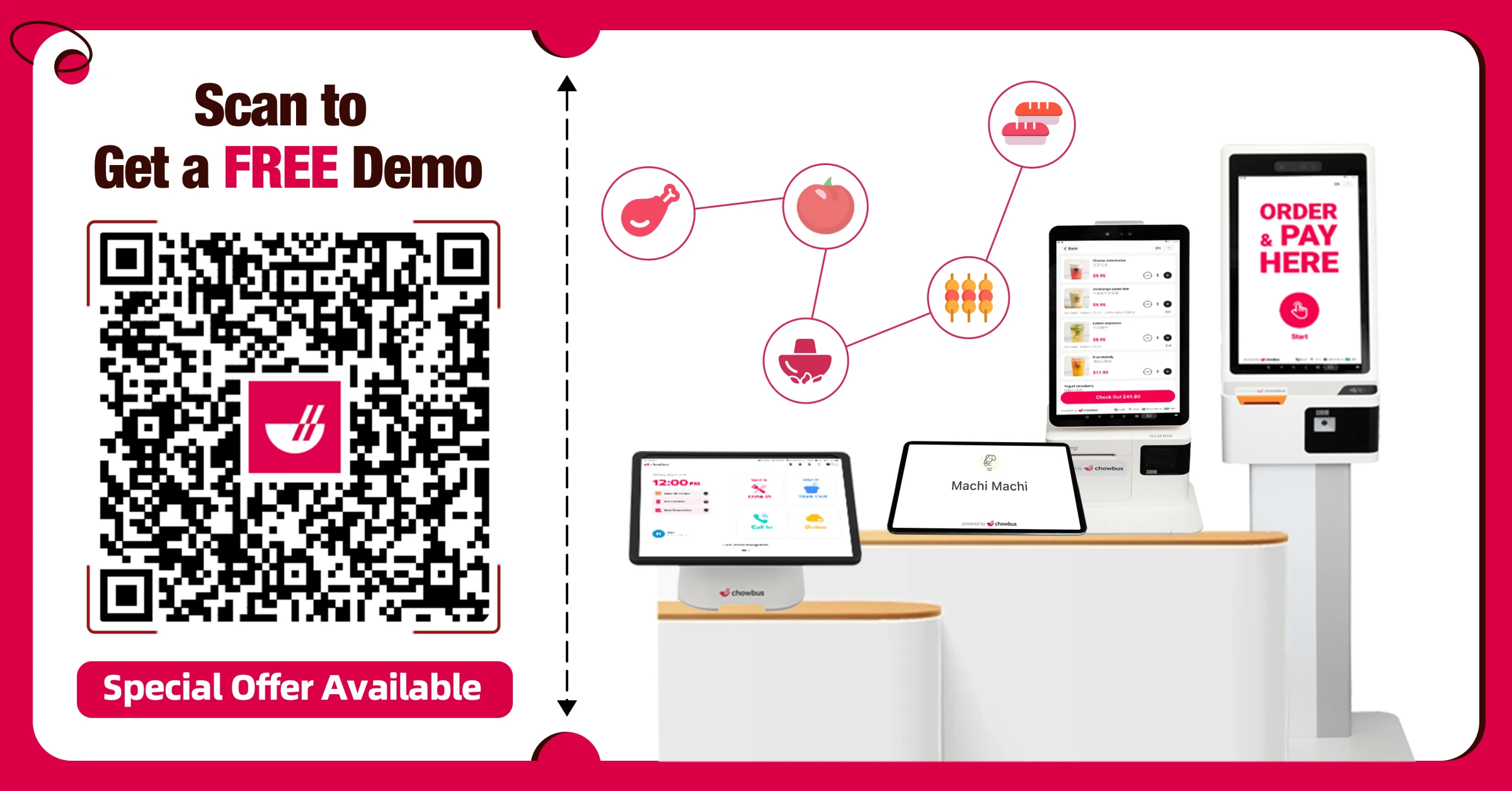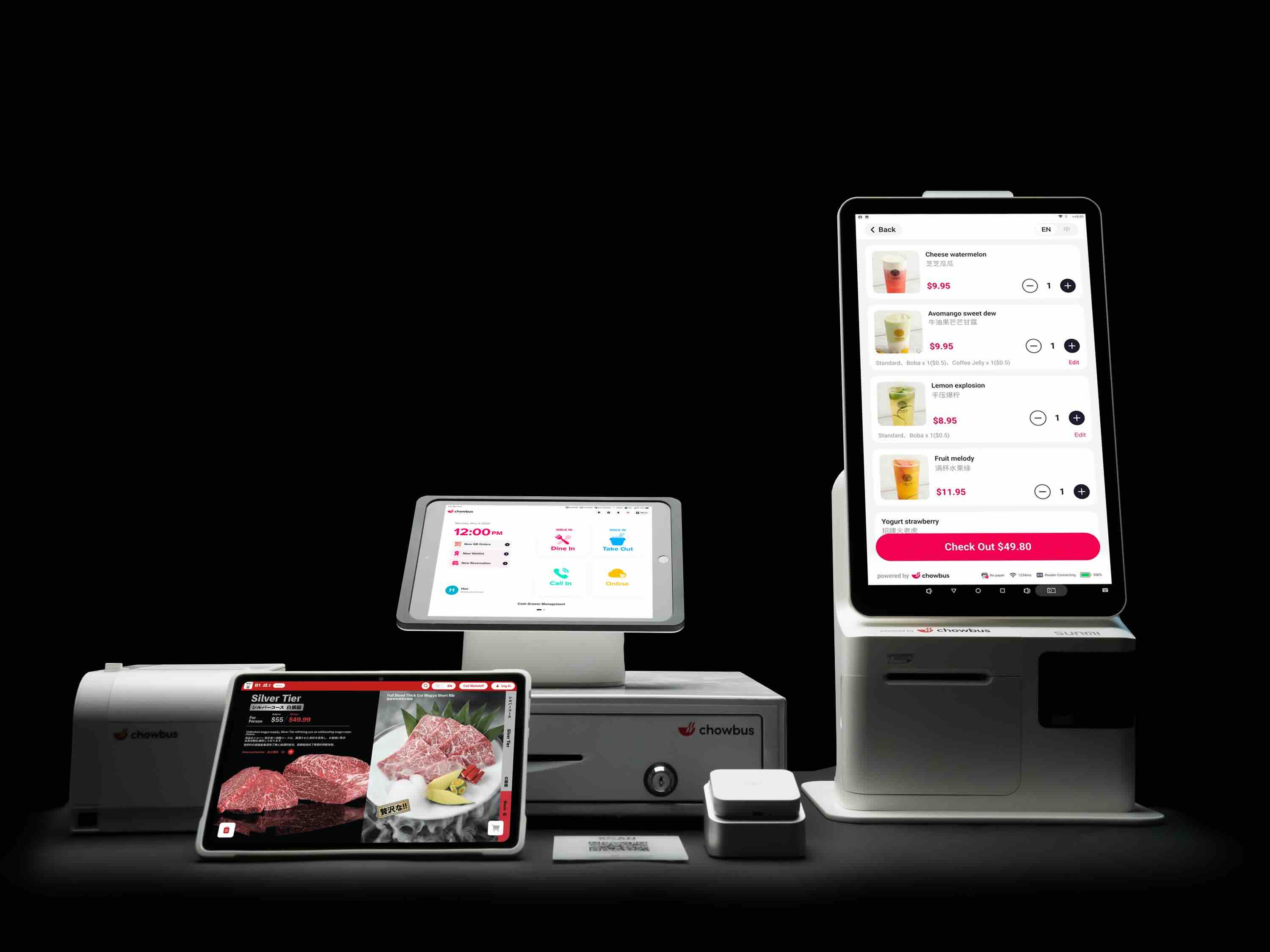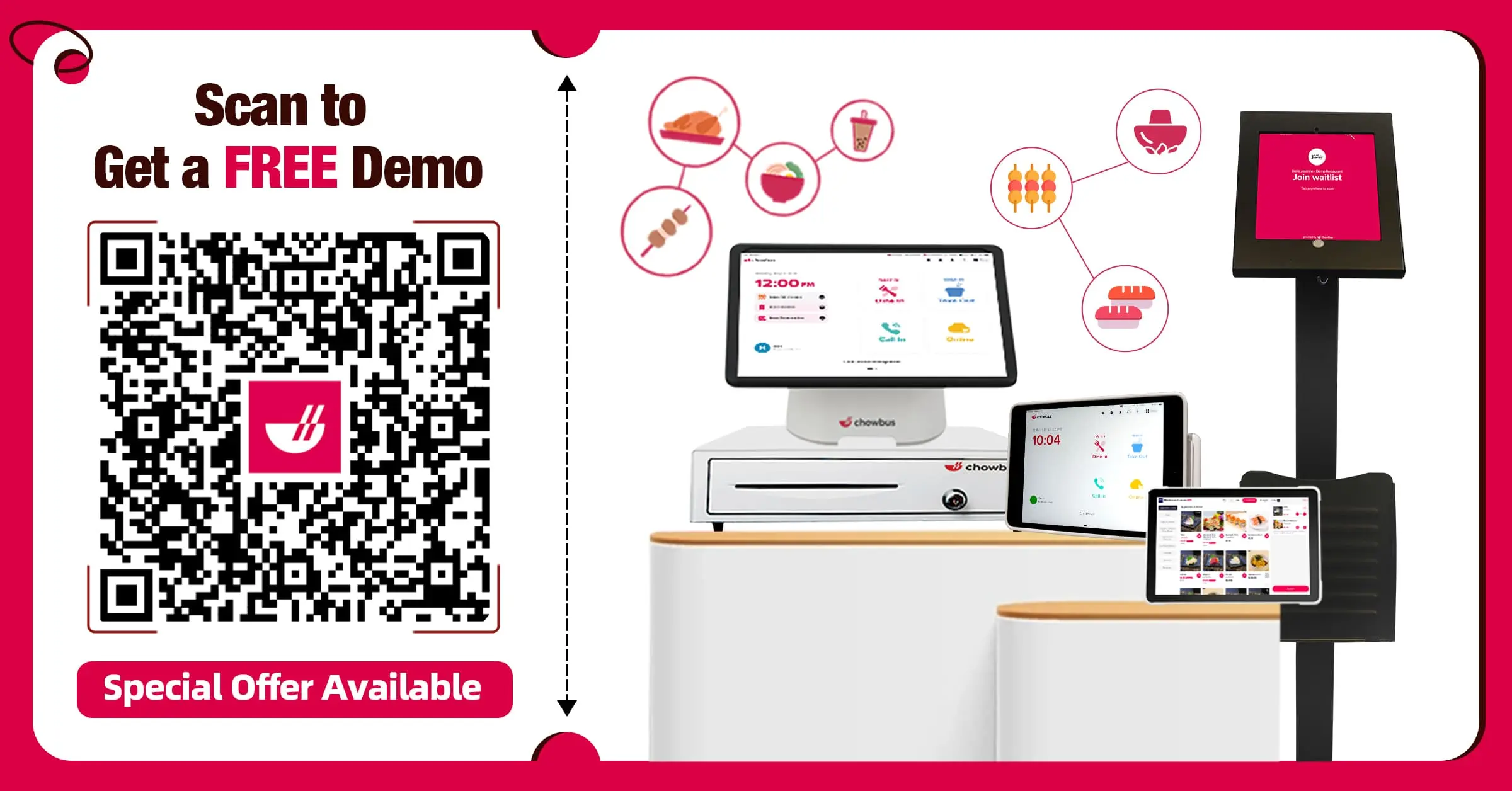Restaurant Innovation: How to Modernize and Stay Competitive

Keeping a restaurant profitable takes more than great food and service. Rising costs, shifting customer expectations, and increasing competition make it harder to stand out. Restaurant innovation offers a way forward—helping you streamline operations, improve efficiency, and create a more engaging dining experience.
From self-service kiosks to AI-powered menu optimization, modern solutions are reshaping the industry. But innovation isn’t about following every trend. It’s about finding smart, practical ways to make your restaurant run smoother while enhancing guest satisfaction.
This guide breaks down what restaurant innovation really means, why it’s essential, and how you can implement strategies that drive long-term success. Whether you’re looking to improve speed, reduce costs, or create a unique dining experience, the right approach can set your business apart. Let’s explore the ideas that are shaping the future of dining.

What is Restaurant Innovation?
Restaurant innovation is the process of introducing fresh ideas, technology, and service models to improve efficiency, enhance the customer experience, and increase profitability. It can involve modernizing ordering systems, exploring new dining concepts, or finding better ways to engage with guests. The goal is to create a smoother operation while keeping the business competitive and appealing.
Why Restaurant Innovation is Essential
Innovation is key to maintaining a competitive edge in today’s restaurant market. Let's look at how it directly benefits your operation:
Staying Relevant: With market conditions evolving, it’s vital that your restaurant does too. Embracing innovation keeps you aligned with industry shifts and ahead of trends that shape consumer habits.
Meeting Customer Expectations: Today’s diners demand more than just good food. They look for speed, convenience, and sustainability. Integrating options like mobile ordering, eco-friendly practices, and contactless solutions such as QR code menus and self-service options not only meets these expectations but often exceeds them, elevating the dining experience.
Boosting Profitability: Effective innovation streamlines your operations and reduces unnecessary waste, which can significantly cut costs. Moreover, these improvements often lead to increased customer satisfaction and loyalty, driving repeat business and enhancing your overall profitability.
By focusing on these areas, you position your restaurant to thrive in an ever-changing environment, ensuring your offerings remain appealing and your operations efficient.
Examples of Innovative Concepts
Self-Service Kiosks & Touchscreen Ordering – Speeds up ordering, reduces wait times, and allows guests to customize meals with ease.
Digital Menus and Tableside Payments – Enhance the customer experience by offering dynamic menu options and convenient payment solutions right at the table, improving service speed and personalizing the dining experience.
Cloud Kitchens & Virtual Restaurants – Lowers overhead costs by focusing on delivery and takeout, eliminating the need for a full-service dining space.
Automated Food Prep & Robotics – Helps address labor shortages by reducing repetitive tasks, improving consistency, and increasing efficiency.
AI-Powered Menu Engineering – Analyzes customer preferences and sales data to adjust menus based on demand, pricing strategies, and seasonal trends.
Innovation isn’t about chasing every trend—it’s about choosing practical solutions that make daily operations easier while improving guest satisfaction. Even small adjustments can create a noticeable impact.
Why Restaurants Must Innovate (Pain Points & Opportunities)
Innovation in your restaurant can transform challenges into growth opportunities. Here's how staying ahead with new strategies addresses core issues and sets you apart in a competitive industry.
Rising Operational Costs
Running a restaurant comes with constant financial pressures. Labor shortages make hiring and retention more challenging, and higher wages add to expenses. Food costs fluctuate, and supply chain disruptions create unpredictability. These factors squeeze profit margins and make it harder to sustain quality and service. Finding ways to automate tasks, optimize workflows, and reduce waste can help offset rising costs while keeping operations efficient.
Customer Demand for Convenience & Personalization
Diners expect seamless service, whether ordering in person, online, or for delivery. A slow or inconvenient experience can push them toward competitors. Mobile ordering, QR code menus, and self-service options speed up transactions and improve satisfaction. Personalization also plays a role—targeted promotions, customized recommendations, and loyalty rewards make guests feel valued, increasing repeat visits and boosting sales.
Competition & Differentiation
With so many options available, standing out requires more than good food. Unique experiences, creative restaurant concepts, and strong restaurant branding make a lasting impression. Interactive dining, chef’s table events, or limited-time themed menus create buzz and attract new customers. A strong online presence, engaging social media, and loyalty programs also help build connections and keep guests coming back.
Technological Advancements
New tools can simplify daily operations, reduce errors, and improve guest interactions. Digital ordering, automated scheduling, and AI-powered insights help streamline workflows and enhance decision-making. Adopting technology early keeps operations efficient and ensures a better experience for both staff and customers. Those who wait too long to embrace change risk falling behind as competitors improve their service and efficiency.
What Drives Restaurant Innovation?
Several factors inspire restaurant innovation, each pushing the industry towards more efficient, customer-centric, and competitive practices.
Customer Preferences Shift Constantly. As your diners evolve, so do their tastes and expectations. They seek healthier options, faster service, and more interactive dining experiences. Adapting to these trends keeps your restaurant appealing and relevant.
Technological Advancements. Technology offers tools that can transform your business operations. From mobile ordering systems to AI for personalized marketing, leveraging tech helps you serve customers faster and more accurately.
Economic Pressures. Operating costs are rising. You're probably looking for ways to do more with less. Innovative practices in energy management, food sourcing, and labor can reduce costs while maintaining quality.
Competitive Landscape. Staying ahead of nearby eateries and big chains means you need to stand out. Unique dining experiences, such as themed nights or chef collaborations, can set your establishment apart.
Regulatory Changes. New health and safety regulations often necessitate changes in how kitchens operate. Adapting your practices to comply while enhancing efficiency is a form of innovation.
By focusing on these drivers, you can craft strategies that not only meet current challenges but also position your restaurant for future success.

Emerging Trends in Restaurant Innovation
Staying ahead means embracing fresh ideas that improve efficiency, cut costs, and elevate guest experiences. Here’s what’s shaping the future of dining.
1. Automation & Robotics
Self-ordering kiosks, automated prep stations, and robotic servers are making service faster and more reliable. These tools reduce labor costs and maintain consistency, allowing staff to focus on higher-value tasks like guest engagement. Automation isn’t replacing hospitality—it’s refining it.
2. Data-Driven Decision Making
POS systems and analytics tools reveal what guests order most, when sales peak, and which promotions work best. Using real-time data, you can adjust pricing, tweak menus, and refine marketing strategies. Decisions based on facts, not guesswork, lead to better profits and a more personalized dining experience.
3. Sustainability & Eco-Friendly Practices
Guests are paying attention to environmental impact. Offering plant-based options, reducing food waste, and switching to sustainable packaging can improve brand perception and attract eco-conscious diners. These efforts don’t just meet expectations—they can also lower costs and improve efficiency.
4. Immersive Customer Experiences
Dining is more than just food—it’s an experience. Augmented reality menus, themed pop-ups, and interactive elements add excitement and create lasting impressions. Thoughtful design, engaging storytelling, and unique presentations can boost word-of-mouth marketing and keep guests coming back.
5. Off-Premise & Virtual Concepts
Cloud kitchens, ghost kitchens, and delivery-focused brands make it possible to serve more guests without expanding physical space. With lower overhead and a streamlined approach, these concepts offer flexibility while meeting the growing demand for takeout and delivery. Expanding beyond traditional dine-in service can open new revenue streams and increase profitability.
Embracing these innovations can create a smoother operation, attract new customers, and improve long-term success.
How to Implement Restaurant Innovation Effectively
To stay competitive and meet the evolving needs of diners, effective implementation of restaurant innovation is key. Here’s how you can start transforming your operations efficiently and effectively:
1. Assess Current Operations
Begin by thoroughly examining your current systems and processes. Pinpoint the areas causing the most issues, such as slow service times, high labor costs, or excessive food waste. Understanding these pain points clearly is the first step toward meaningful changes.
2. Set Clear Goals & Objectives
What does success look like for your restaurant? Maybe it's shorter wait times, lower operating costs, or increased average sales. Whatever your goals, ensure they align with your restaurant's brand identity. This alignment helps steer all efforts in the right direction.
3. Invest in the Right Technology
Opt for scalable, user-friendly technology solutions that integrate easily with your existing systems. This might include upgrading your POS system or implementing mobile ordering platforms. Choosing the right technology not only enhances efficiency but also improves customer satisfaction.
4. Train & Involve Your Team
Successful innovation depends heavily on your staff. Provide them with the necessary training and resources to adapt to new technologies or processes. Encourage ongoing feedback and ideas, which can lead to improvements and greater buy-in from those who interact directly with your customers.
5. Monitor, Measure, and Refine
Track important metrics such as customer satisfaction, profit margins, and employee engagement. Use these indicators to make informed decisions and tweak your strategies where needed. Staying agile allows you to respond swiftly to new data and evolving market conditions.
6. Pilot Small, Then Scale
Test new ideas on a small scale first, perhaps at a single location or through a temporary pop-up. This approach lets you gather valuable feedback without overcommitting resources. Once you've honed the process and seen positive results, you can confidently expand these innovations more broadly across your operations.
By following these steps, you can ensure that your efforts in restaurant innovation lead to tangible benefits, helping your business thrive in a competitive market.
Common Challenges & How to Overcome Them
Bringing new ideas into a restaurant isn’t always smooth. Unexpected costs, staff resistance, and the risk of disrupting daily service can slow progress. But with the right approach, these hurdles don’t have to hold back growth.
Budget Concerns
New tools and processes might seem expensive at first, but holding off on improvements can cost even more in lost efficiency and missed opportunities. Start with small changes that make an immediate impact, such as optimizing online ordering or refining guest interactions. Many upgrades offer flexible pricing, so it’s possible to invest in phases instead of making large upfront commitments.
Staff Pushback
People tend to resist change, especially when they think it adds extra work. Clear communication makes a difference. Show how new processes simplify tasks instead of making them harder. Hands-on training and early involvement in decisions help teams feel confident instead of frustrated.
Choosing the Right Technology
New solutions should enhance operations, not complicate them. Overloading with features that don’t fit daily needs creates confusion and slows adoption. Focus on tools that integrate easily and solve specific problems. Testing before a full rollout helps catch potential issues early.
Maintaining a Smooth Transition
Big shifts can disrupt service if they aren’t planned well. Gradual implementation keeps things running while staff adjusts. Testing changes during slower hours or in a single location before a full rollout helps avoid unnecessary stress.
Customer Adaptation
Guests get used to familiar ways of ordering and interacting with staff. Sudden shifts in service style or technology might cause hesitation. Clear signage, staff guidance, and introductory promotions encourage customers to embrace the updates instead of feeling inconvenienced.
Shaping a better dining experience takes time, but each step forward creates a stronger business. Even small adjustments can improve efficiency, keep guests coming back, and set the stage for long-term success.
Actionable Tips & Next Steps
If you're ready to introduce innovation in your restaurant, here are a few practical tips and immediate actions to get started:
Create an Innovation Roadmap
Start by outlining your innovation goals. Define what you need to achieve immediately, then set milestones for the short and long term. This roadmap will guide your efforts, helping you stay focused and measure progress. For instance, you might aim to introduce a new menu item next month, implement a digital ordering system by next quarter, and redesign your dining space within a year.
Engage with Your Network
Connect with peers and mentors who understand the restaurant business. Exchange ideas with other restaurant owners, and attend industry events to learn from successful case studies. Seeking advice from experienced professionals can provide you with proven strategies and prevent common pitfalls. These connections are invaluable for gaining insights not readily available through other channels.
Stay Informed About Trends
Keep your finger on the pulse of the latest trends by regularly reading industry blogs and following news outlets. Technologies, customer preferences, and successful marketing strategies evolve; staying updated helps you adapt and remain competitive. This habit ensures you’re always ready to implement fresh ideas that resonate with your clientele.
Experiment & Iterate
Finally, don’t be afraid to try new things. Experiment with different technologies, service models, or marketing tactics, and observe what works best for your business. Small, calculated risks can yield significant benefits. After testing, gather feedback and refine your approach. Continuous improvement is key to maintaining relevance and maximizing efficiency in a competitive market.
Conclusion
Embracing restaurant innovation is no longer an option but necessary to keep your business thriving. By implementing modern solutions, you not only streamline your operations and improve efficiency but also create more engaging and satisfying dining experiences for your customers. As we’ve explored, adopting technologies such as self-service kiosks, AI-powered menu optimization, and unique dining concepts can significantly impact your profitability and customer loyalty. The right approach in restaurant innovation sets your business apart, ensuring you meet today’s challenges head-on while preparing for future growth.
Remember, the journey to enhancing your restaurant starts with a single step towards change. Make that step count by choosing solutions that fit your unique needs and vision.
Ready to take your restaurant to the next level?
Don't let the complexities of technology selection and implementation overwhelm you. Chowbus POS offers an all-in-one restaurant POS system solution that simplifies operations, boosts efficiency, and drives revenue. Connect with us to see how our technology can transform your restaurant. Book a free demo or consultation today and start your journey towards successful restaurant innovation with Chowbus POS. Your future in dining awaits!

Frequently Asked Questions About Restaurant Innovation
Staying ahead in the restaurant industry means embracing new ideas that enhance efficiency, customer experience, and menu offerings. This FAQ covers key innovations shaping the future of food, technology, and culinary creativity to help you stay competitive.
What is Innovation in Food Industry?
Innovation in the food industry involves creating new products, improving processes, and enhancing customer experiences to meet evolving consumer demands. It includes advancements in food technology, sustainable packaging, plant-based alternatives, automation, and personalized nutrition. Companies innovate to improve food quality, safety, convenience, and sustainability while staying competitive in the market.
What is the Future Technology for Restaurants?
The future technology for restaurants focuses on enhancing customer experience and operational efficiency through automation and data analytics. Innovations include AI-driven personalization to tailor menu recommendations based on customer preferences, robotics for precision cooking and efficient service, and IoT for real-time resource management. Additionally, augmented and virtual reality may offer immersive dining experiences, and blockchain technology could ensure food traceability for safety and quality assurance. These advancements aim to streamline restaurant operations and elevate the dining experience.
What are the Future Food Innovations?
The future of food innovations is poised to transform how we eat and interact with our food. Key focus areas include lab-grown meats, offering sustainable alternatives to traditional livestock farming; plant-based proteins, which continue to evolve in taste and texture; personalized nutrition, where diets are tailored using genetic profiling; and vertical farming, which maximizes space and reduces resource usage. These innovations aim to make food production more sustainable, nutritious, and accessible to meet global needs.
What is Menu Innovation?
Menu innovation is the process of creating new dishes, updating existing recipes, or introducing unique flavors to keep a restaurant’s offerings fresh and competitive. It involves analyzing food trends, customer preferences, and operational feasibility to enhance the dining experience and boost sales. Restaurants use menu innovation to attract new customers, retain regulars, and differentiate themselves in the market.
What are Culinary Innovations?
Culinary innovations are creative advancements in cooking techniques, ingredients, presentation, and food technology. They include new flavor combinations, modernist cooking methods, sustainable food solutions, and tech-driven dining experiences. These innovations enhance taste, nutrition, and sustainability while shaping the future of food.
Looking for more insights? Explore our blog for the latest updates on restaurant trends, technology, and strategies to stay ahead.

Recommended Articles: